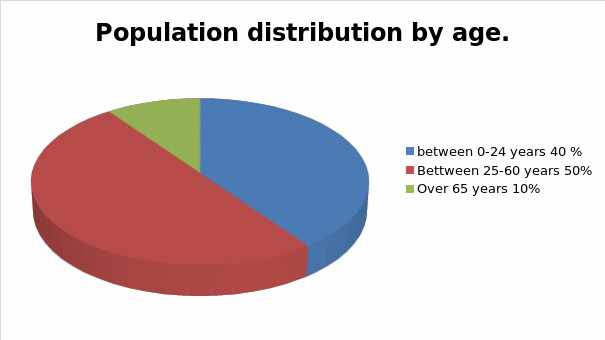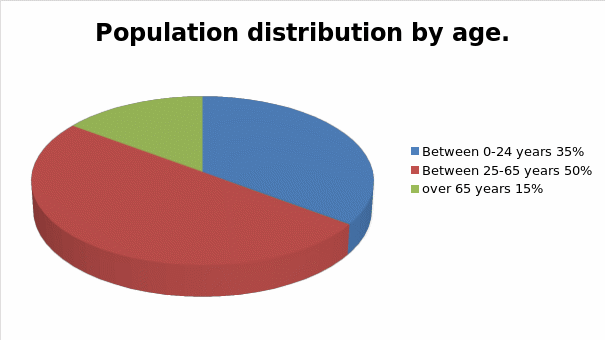Introduction
Improved and advanced health care services have led to a longer life expectancy and better life over the past decades. However, factors like aging, obesity, and changing trends have affected the provision of these services. Demographic changes and the increasing number of new types of bacteria and viruses have made the delivery of healthcare services difficult. This has led to the need for advancement both in technology and scientific research. In this paper, these challenges to healthcare delivery are discussed, and the coming ones in the future are anticipated to help determine how these services can be improved and the challenges overcome.
Aging
This is a significant influence on healthcare delivery since this group consists of elderly people who do not work and, therefore, are not able to pay for the services. This group is also prone to illnesses and, therefore, requires more attention than any other group. With the efforts centered on increasing life expectancy this group is bound to grow in size; therefore, more attention will be required in the future. According to the results given by the U.S census bureau in 2010, the aged population was the minority with the majority being the middle age. This trend implies that in the future middle age will enter the age group thus increasing the size, and this will automatically lead to increased demand for medical services (Anderson, 2010). The following is an illustration of the nature of the population in the US as of 2010 and the prospected changes by the year 2050.


From the above illustration, the elderly will increase progressively by the year 2050. This increase in the aged population is due to the efforts that have been put into making the environment a better place to live. Pollution has been the main factor that has been improved through the centralization of emission-causing activities in places where human habitation is low. Care for the aged has also promoted life expectancy because this helps them stay free from infections for longer periods.
This care has also been enhanced by the provision of hygiene and sanitation services to the aged. Other habits like smoking and excessive alcohol indulgence are on the minimal, and this promotes long healthy life. Crime has been on the decrease, and things like nuclear attacks have seized to be common occurrences, and people live their full lives without such accidents (Guah, 2009).
Demographic factors like improved knowledge and education on healthy eating habits are crucial to increased life expectancy, people are now eating nutritious food that does not harm the body as well as avoiding foods that add toxins to the body and cause disease. People have learned the importance of exercise, and this has been encouraged through the introduction of gyms and sports clubs to provide avenues for exercise to improve the quality of life. Technology has also improved life expectancy because people easily retrieve information from the net to learn their conditions and help improve them. Getting attention from health care has also improved because emergencies can easily be attended to with ease in communication provided by technology (Guah, 2009).
Some health issues are common in the elderly population, and this has affected the health care provision in that with the increased aged population these cases have increased. An example of these issues is the Arthritis condition which can render a patient immobile thus forcing those around them to take twenty-four-hour attention to them. Another common occurrence in the elderly is stroke which is an extremely serious condition that also makes a patient helpless and requires that full attention be given. This calls for attention from health care providers and this is particularly challenging if such cases increase (Guah, 2009).
To help improve such complications among the old, it is necessary to learn about these conditions and practice healthy habits that help prevent diseases. For the aged, it is also beneficial to shower them with love and attention to reduce stress levels and avoid stoke which is mostly caused by depression. For cases like Arthritis, early diagnosis is necessary to help keep excessive effects at bay; this can be done through frequent health checkups and care (Guah, 2009).
Obesity
The prevalence rate of obesity in the U.S has been increasing over the years; by 2010 the rate was 25% in most of the states with others going as high as 30%. Half of the total population can be regarded as overweight, and this is a serious health issue because this means they are prone to health complications. Further still, its steady increase is seriously alarming given the health complications that come with obesity. It is estimated that with the current trend in the established cases of obesity, in the next ten years 60% of the U.S population might be overweight with 40% being obese, and this is a cause for concern (Segrave, 2008).
According to Segrave (2008), the principal causes of obesity in the U.S are
- The increased availability and consumption of processed and packed foods due to the busy lifestyles that they lead. These foods in most cases contain lots of sugar, condensed fats and oils, preservatives, and additions that do not have any nutritional value but only add junk to the system. Most of these chemicals cannot be digested by the body hence they are stored as fats while others translate into toxins which often bring health problems to the body.
- Consumption of foods that lack nutrients in large quantities, these are mostly fried foods and soft drinks that go with them. These foods are easily absorbed into the body making the person hungry and forcing him to take more portions than necessary, and this of course leads to obesity.
- Fast foods are all over America and this encourages people to grab something while working, driving, or even when bored. Taking such snacks between meals is risky especially because they contain a lot of fats and preservatives. They can be termed as empty calories that only contribute to gaining weight with no added value to the body.
- The ease of movement provided by vehicles has made Americans lazy and this coupled with many hours of sitting in the office leads to decreased metabolism, therefore, most of what is ingested in the body are stored as fats (Census scope, 2011).
Increased cases of obesity have led to increased weight-related health problems and this further frustrates the efforts of health care providers to overcome diseases. The more people who are obese the larger the demand for these services which makes it hard for them to deliver effectively (Segrave, 2008).
Examples of illnesses caused by obesity are diabetes and hypertension. Diabetes is likely to occur because increased intake of processed and refined foods leads to a fast absorption in the body signaling the need for more food which will lead to excess production of insulin. This demand for insulin soon exceeds what the body can provide leading to diabetes. This condition is dangerous because the body is not able to regulate blood sugar levels; therefore, requiring constant medical attention and can cause death if not corrected. Hypertension is attributed to overworking the heart and the tendency to cause failure. This is because for obese people the pulmonary artery has to pump blood with a lot of pressure to cater for the big mass as well as outdo the thick deposits of fat surrounding the blood vessel (Segrave, 2008).
However, these complications related to obesity can easily be solved by observing what is taken into the body. The empty calorie diets can be substituted with whole-grain foods such as grains and legumes which the body takes time to break down, and are not easily absorbed into the body. These foods also keep the stomach full for longer periods thus frequent eating sessions are avoided (Holroyd, 2008).
Fruits and vegetables nourish the body with disease-fighting agents as well as supply the body with vitamins and minerals which are acutely essential to the body. Processed and canned foods can be replaced with natural and organic foods such as chemical-free vegetables with no organic modifications, foods that are free of additives and artificial flavors, and preserving agents. In general, foods prepared in the lab are not ideal; naturally grown foods are the best (Holroyd, 2008).
With the majority of the people working for long hours in the office, exercise is ideal, and this can be encouraged by opting to walk to the offices rather than driving there. Attending fitness programs is also advisable to keep the body active and increase metabolism. This helps fight complications like breath shortness or even heart failure caused by excess weight (Holroyd, 2008).
Future adaptations of healthcare delivery to help prevent age and obesity-related health issues
Investing in healthcare facilities and medical technology will help conquer the growing numbers of people with aging complications. This, of course, will lead to increased costs on medical care and therefore be more expensive, however, the benefits outdo the costs therefore it is worth spending, the more the resources spend on health, the better the progress towards achieving better health care (Oleske, 2012).
Educating the society on the various ways to manage congenital and chronic diseases such that these diseases remain at their lowest level and chances of advancing into serious states are kept at minimal. This education is especially useful in fighting the diseases caused by aging because it provides knowledge on what to expect in later stages of life and what measures to take to avoid some health issues or what lifestyle to adopt so as not to suffer some illnesses. For instance, enough exercise and taking whole meals can help keep diabetes away during old age (Oleske, 2012).
Some conditions like obesity are preventable, and this can be done by empowering patients through sharing knowledge and information and basing research on real-life situations. This can also be achieved by engaging those affected in continuous monitoring and evaluation to form a network of information sharing that will see the whole society involved in healthcare (Oleske, 2012).
Conclusion
Prevention is better than cure; therefore attention should be shifted from providing quality health care to practicing healthy eating habits and leading lifestyles that promote excellent health. Practicing these healthy habits helps reduce the cost of medical services and products.
References
Anderson, T. (2010). An unofficial guide to the 2010 U.S. Census. Campbell, CA: FastPencil, Inc.
Census scope. (2011). Unites States Age distribution: Social Science Data Analysis Network. Web.
Guah, M. W. (2009). An Official Publication of the Information Resources Management Association, International Journal of Healthcare Delivery Reform Initiatives, 1(3): 43-58.
Holroyd, H. J. (2008). Stop obesity: An answer to the problem of obesity and its complications. Bloomington, IN: AuthorHouse.
Oleske, D.M. (2012). Goal-Oriented Patient Care-An Alternative Health Outcomes Paradigm. New york. Kluwer Academic/Plenum Publishers.
Segrave, K. (2008). Obesity in America, 1850-1939: A history of social attitudes and treatment. Jefferson, N.C: McFarland & Co.